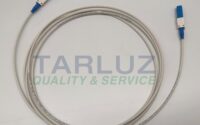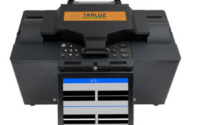Introduction to BIDI Optical Module.
What is a BIDI Optical Module?
A Bidirectional (BIDI) optical module is a compact, high-performance transceiver used in fiber optic communication systems. Unlike traditional optical modules that require two fibers (one for transmitting and one for receiving), a BIDI module uses only a single fiber strand for bidirectional data transmission. This is achieved through Wavelength Division Multiplexing (WDM) technology, which allows different wavelengths (colors) of light to travel in opposite directions on the same fiber.
BIDI modules are widely used in telecommunications, data centers, and enterprise networks where fiber resources are limited, helping to reduce costs and simplify cabling infrastructure.
How Does a BIDI Optical Module Work?
The key principle behind BIDI modules is WDM technology, which separates upstream and downstream signals using different wavelengths.
Working Principle:
Transmission Side:
The BIDI module emits light at a specific wavelength (e.g., 1310 nm) for transmitting data. A WDM filter inside the module ensures that only this wavelength passes through in the transmit direction.
Reception Side:
The same fiber carries incoming light at a different wavelength (e.g., 1490 nm). The WDM filter directs this wavelength to the receiver while blocking the transmit wavelength.
Full-Duplex Communication:
Since the two wavelengths do not interfere, the module can send and receive data simultaneously over a single fiber.
Key Parameters of BIDI Optical Modules
When selecting a BIDI module, several technical parameters must be considered:
Data Rate & Standards
Common Data Rates:
1.25G (SFP BIDI) – Used in Gigabit Ethernet (1000BASE-BX10).
10G (SFP+ BIDI) – Used in 10G Ethernet (10GBASE-BX).
25G/40G/100G (QSFP BIDI) – For high-speed data centers.
Compliance Standards: IEEE 802.3ah, SFP MSA, XFP MSA.
Wavelength Combinations
Common Pairs:
1310 nm (Tx) / 1490 nm (Rx) – Common in GPON networks.
1270 nm (Tx) / 1330 nm (Rx) – Used in 10G BIDI SFP+.
1490 nm (Tx) / 1550 nm (Rx) – Used in long-reach applications.
Transmission Distance
Short Reach (SR): Up to 10 km (e.g., 1000BASE-BX10).
Long Reach (LR): Up to 40 km (e.g., 10GBASE-BX40).
Extended Reach (ER): Up to 80 km (with amplification).
Fiber Type & Connector
Single-Mode Fiber (SMF): Used for long-distance transmission.
LC Duplex Connector: Standard for BIDI SFP/SFP+ modules.
Power Consumption & Temperature Range
Low Power: Typically <1W for SFP, <1.5W for SFP+.
Operating Temperature:
Commercial (0°C to 70°C)
Industrial (-40°C to 85°C)
Digital Diagnostics Monitoring (DDM/DOM)
Monitors real-time parameters like Tx/Rx power, temperature, and voltage.
Advantages of BIDI Optical Modules
Cost-Effective: Reduces fiber usage by 50%.
Space-Saving: Simplifies cabling in dense networks.
High Compatibility: Works with standard SFP/SFP+ ports.
Flexibility: Supports multiple wavelength combinations.
Applications of BIDI Modules
Fiber-to-the-Home (FTTH) Networks (GPON/EPON).
Metro and Access Networks.
Data Center Interconnects (DCI).
5G Mobile Fronthaul/Backhaul.
In Conclusion
BIDI optical modules are an efficient solution for single-fiber bidirectional communication, leveraging WDM technology to optimize fiber usage. By understanding their working principles and key parameters, network engineers can deploy them effectively in various high-speed optical networks.
Would you like a comparison between BIDI and traditional duplex optical modules? Let me know in the comments! Know more about Tarluz.
SFP vs SFP+: What’s the Difference and Which One Should You Use?



